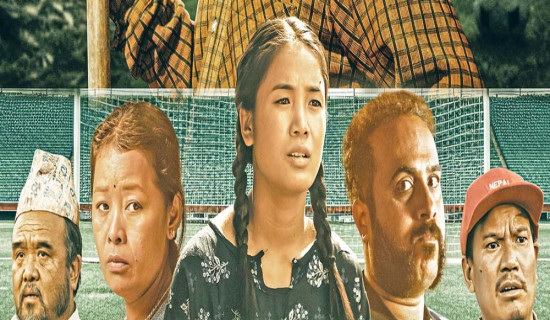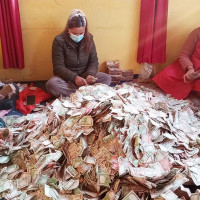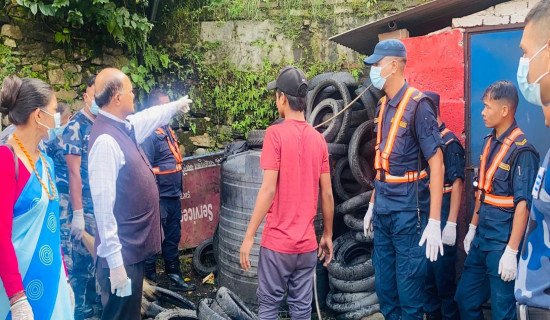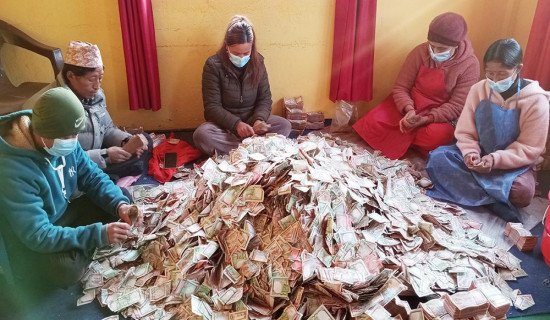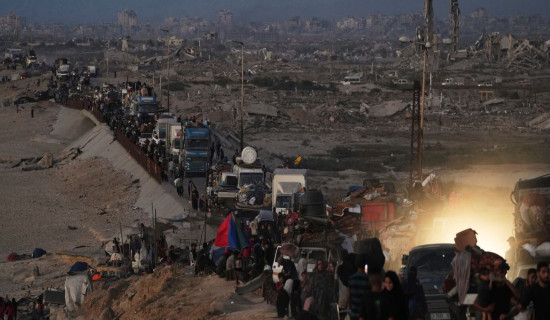- Thursday, 18 September 2025
Seto Coat: Purity In Practice
The name Dr. Bhola Rijal brings a few things to mind. The author, though, is not one of them, but he has written a book that is a must-read as he has poured out his year’s experiences, passion, love, devotion, and affinity towards the medical profession in his debut volume, Seto Coat. Both medical professionals and general people should read this book to understand what it takes to be a good doctor. In his autobiography, he urges doctors to see patients not as mere individuals with certain ailments but as humans with emotions, insecurities, vulnerabilities, and a lot more. When he urges doctors to be empathetic towards their patients, it appeals to our senses.
If you want to live a happy life, tie it to a goal, not to people or things. The second chapter of the book justifies this quote, and yes, it’s our profession that makes us who we are; it gives us identity and a sense of purpose in life to get going. In this chapter, he glorifies the medical profession as a noble profession, which it actually is. In the third chapter, the author tries to reinforce beneficence, non-maleficence, autonomy, and justice as the pillars of medical ethics that all medical professionals should internalise as their guiding principles.
The title of the book is quite symbolic; white is the symbol of purity, and the white coat symbolises the purity of purpose being endowed while being a medical professional. The white coat symbolises an obligation on the part of aspiring medical professionals that they will honour their profession by placing patients above hemselves. The white coat reinforces both patients' and doctors' belief in the possibility of healing, which gives us eternal hope. The veteran gynaecologist Dr. Bhola Rijal has published this book to retell his experiences, which can be guidelines for the doctors of present and coming generations.
The book has 16 chapters, and in the first five chapters of the book, the writer talks about the roles and responsibilities of an ideal doctor. The author in this chapter tries to justify the fact that an ideal doctor is not only knowledgeable and skilled in medical science, but he is also the one who possesses the human qualities necessary to build trust, comfort, and a positive doctor-patient relationship. In the second chapter, he describes the medical profession as vast and diverse, with numerous specialties and subspecialties, and he asserts that it requires years of education, training, and continuous learning to stay abreast of advancements in medical science and technology.
The second-last chapter is named Health Policy. The author gives a glimpse of our own history, and it’s thrilling to read how Nepal came into the age of modern medicine, traversing a long journey. He shed light on the fact that although Nepal invests in producing competent medical professionals, the act of retaining them has been a challenge. Dr. Rijal, in his debut book Seto Coat, dares to say that the Medical Council, Nursing Council, Pharmacy Council, and Nepal Health Research Council have failed in monitoring and regulating health professionals and quality demarcation of the services provided. This chapter is probably the part where readers feel most engaged.
In chapter 15, the author talks about the development of the modern medical system in Nepal after the establishment of Bir Hospital in 1947 B.S. He expresses his happiness for the fact that Nepal has been able to control diseases like leprosy, TB, HIV, measles, whopping cough, Japanese encephalitis, etc. with sustained effort, and now Nepal is making gradual progress in performing organ transplants, plastic surgeries, treatment of cancer, etc. The last chapter of the book, where he brags about his ambitious project of a test tube baby, is quite thrilling, and readers want to know more. In the same chapter, it’s interesting to learn about his effort to legalise abortion in Nepal, which he believes has phenomenally impacted Nepali women, but when he looks back, he feels a little disheartened as sex-selective abortion became rampant.
Dr. Rijal affirms that the government has an obligation to take steps to ensure access to healthcare services, facilities, and conditions that are necessary for the well-being of the population, but readers expect more from him in this regard.
As a reader, I would expect something more thought-provoking from a veteran gynaecologist like Dr. Bhola Rijal, who has contributed so much in the sector of modern medicine in Nepal. He could have proposed policies on enhancing the training of healthcare professionals to produce a competent workforce that is well-equipped to deliver high-quality care. He could have taken measures to retain skilled medical professionals in the country and implemented policies to revamp the medical sector in Nepal.
After a certain time, the book becomes too didactic, and it feels as if somebody is giving you sermons, and the preaching becomes repetitive to the extent that a reader can easily predict what comes next. Readers expect something more thought-provoking from a veteran like him.
The author was one of the founders of Om Hospital and Research Centre. Although he was perfectly aware of the financial and social limitations that deterred less privileged people from getting medical facilities from the good hospitals, nowhere in his book did he talk about policy reforms that could compel such hospitals to reserve certain welfare quotas for the treatment of such poor, marginalised, and underprivileged citizens.
All in all, the book Seto Coat is an arousing read that gives readers a chance to delve into their own history (the history of modern medicine in Nepal) and compels authorities to think about what can be done to institutionalise the progress made to date in this noble profession.
(Adhikari is a journalist at The Rising Nepal.)



